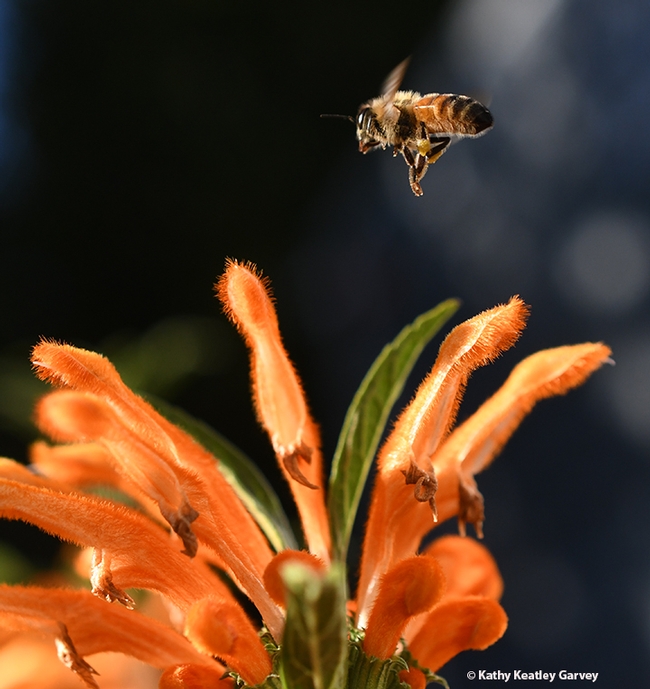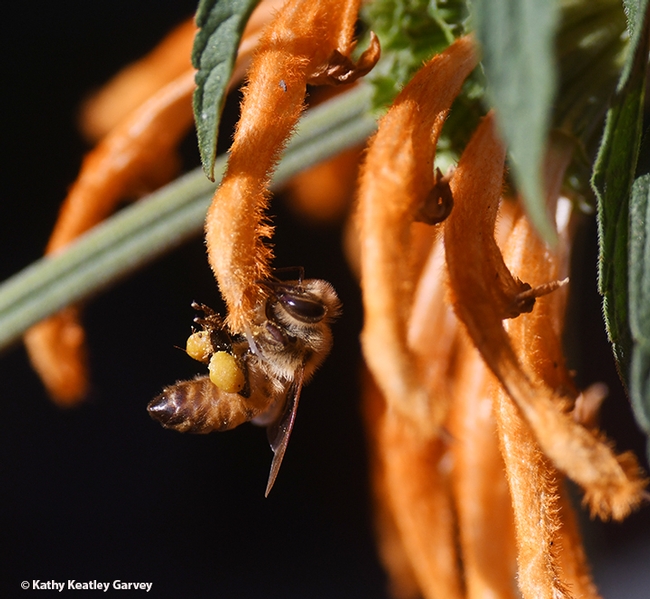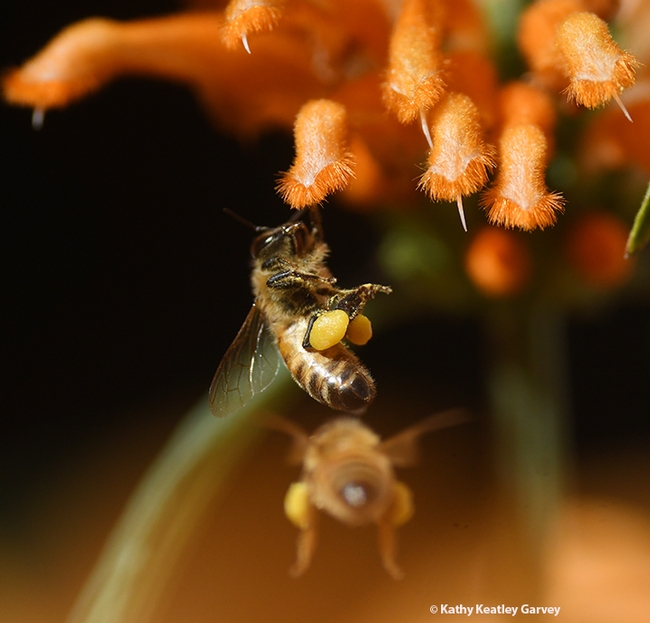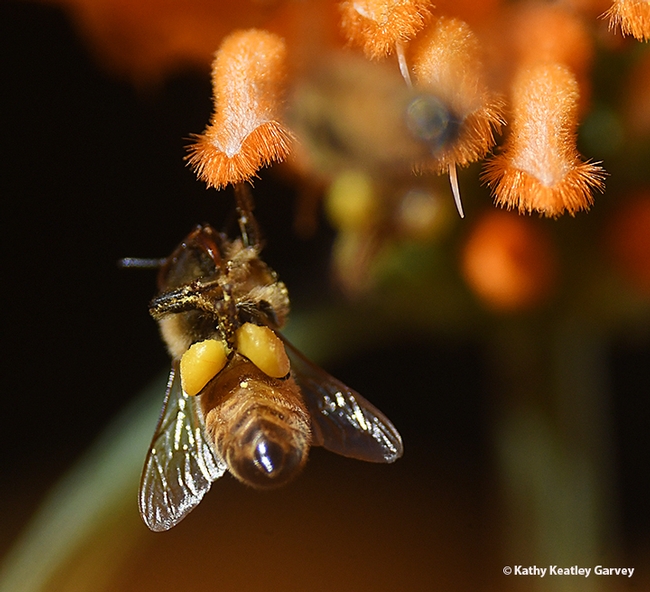Honey bees have nothing on the late Helen Reddy (Oct. 25, 1941-Sept. 29, 2020), an Australian-born singer who roared like a lion: "I am woman, hear me roar."
Her hit song, "I Am Woman," released in 1972, became an anthem for the women's liberation/equal rights movement back in the '70s.
"I am strong
I am invincible
I am woman"
Worker honey bees basically do all the work in the colony, and they're out there foraging on everything they can find--when the weather cooperates. Lately we've been watching collecting pollen and nectar on lion's tail, Leonotis leonurus and thinking about UC Davis emeritus professor Norman Gary's book, Honey Bee Hobbyist: The Care and Keeping of Bees.
"The importance of pollen to the health and vigor of the honey bee colony cannot be overstate," he writes in his entry on pollen foraging. "Bees need a balanced diet. Honey satisfies the bees' carbohydrate requirements, while all of the other nutrients--minerals, proteins, vitamins and fatty substances--are derived from pollen."
Gary, known internationally as "The Bee Man" for his career as a hobby beekeeper, commercial beekeeper, deputy apiary inspector in New York, honey bee research scientist, entomology professor, author, bee wrangler and Guinness World record holder (he holds the Guinness World record (109 bees inside his closed mouth for 10 seconds) served on the UC Davis entomology faculty from 1962 to 1994 after a 32-year academic career. He has kept bees for some seven decades and has authored more than 100 publications, including scientific papers, book chapters and popular articles in beekeeping trade journals. He drew widespread acclaim for wearing a head-to-toe suit of clustered bees while "Buzzin' with His Bee-Flat Clarinet."
But back to the girls on the lion's tail. They are determined, these girls. Helen Reddy packed a punch, but honey bees know how to pack a wallop of pollen on lion's tail.
"I am honey bee; hear me roar."
Attached Images:

A honey bee heads for the lion's tail, Leonotis leonurus, in Vacaville, Calif. on a sunny day in December.

Ahh, just what this worker was looking for. The plant meets her needs and the needs of her colony. (Photo by Kathy Keatley Garvey)

Word spreads that the lion's tail is the "place to bee." (Photo by Kathy Keatley Garvey)

This pollen-packing honey bee is oblivious to everything but her plant, the lion's tail. (Photo by Kathy Keatley Garvey)